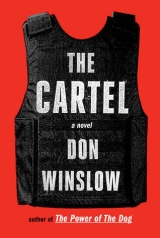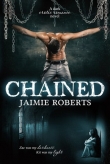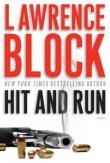
Текст книги "The Cartel"
Автор книги: Don Winslow
Жанр:
Криминальные детективы
сообщить о нарушении
Текущая страница: 2 (всего у книги 42 страниц)
Let her live out her life, Adán thinks. As for financial support, she’s on her own. She can keep the La Jolla house, if the Treasury Department doesn’t find a way to take it from her, but that’s it. He’s not going to support a woman who betrayed him; who is, in effect, stupid enough to cut off her own lifeline.
When the church clears, the marshals walk Adán out to a waiting limousine and put him in the backseat. The car follows Lucía’s behind the hearse out to El Camino Memorial Park in Sorrento Valley.
Watching his daughter lowered into the earth, Adán lifts cuffed hands in prayer. The marshals are kind—they let him stoop down, scoop up a handful of dirt, and toss it on Gloria’s casket.
It’s all over now.
The only future is the past.
To the man who has lost his only child, all that will be is what already was.
Straightening up from his daughter’s grave, Adán says quietly to Tompkins, “Two million dollars. Cash.”
To the man who kills Art Keller.
Abiquiú, New Mexico
2004
The beekeeper watches the two men come down the gravel path toward the apiary.
One is a güero with silver hair and a slightly stiff gait that comes with age. But he moves well, a professional, experienced. The other is Latino, brown-skinned and younger—graceful, confident. They walk a few feet apart, and even from a hundred yards, the beekeeper can discern the bulges under their jackets. Stepping back to the hives, he takes the Sig Sauer from its hiding place, jacks a round into the chamber, and, using the arroyo as cover, starts moving down toward the river.
He doesn’t want to kill anyone unless he has to, and if he has to, he wants to do it as far from the monastery as possible.
Kill them at the river’s edge.
The Chama is swollen, and he can pull the bodies into the water and let the current take them away. Sliding down the muddy bank, he turns over on his stomach, peers over the edge, and watches the two men cautiously make their way toward the beehives.
He hopes that they stop there, and that they don’t damage the hives out of carelessness or spite. But if they keep coming, he’ll let them into pistol range. More out of habit than thought, his hand swings back and forth, rehearsing the first two-shot burst, and then the second.
He’ll take the younger man first.
The older one won’t have the reflexes to react in time.
But now the two men spread out, widening the angle as they approach the hives, making his four-shot pattern harder. So they’re professionals, as he would have expected, and now they pull their weapons and approach the hives with their guns pointed out in front of them, in the two-handed grip that they’re all taught.
The younger one juts his chin at the ground and the older one nods. They’ve seen his footprints that lead down to the river. But fifty yards of flat ground with only ankle-high brush for cover leading to a sheltered riverbank where a shooter could hit them at will?
They don’t want it.
Then the silver-haired man yells, “Keller! Art Keller! It’s Tim Taylor!”
Taylor was Keller’s boss back in the day in Sinaloa. “Operation Condor” in 1975, when they burned and poisoned the Sinaloan poppy fields. After that he was in charge of Mexico when Keller was shredding it up in Guadalajara, becoming a superstar. He watched as Keller’s trajectory shot right over him.
Keller thought he’d be retired from DEA by now.
He keeps the Sig trained on Taylor’s chest and tells him to holster his weapon and put his hands up.
Taylor does it and the younger man follows suit.
Keller gets up and, pistol pointed, moves toward them.
The younger man has jet-black hair, fierce black eyes, the cocky look of a street kid. The kind of agent they recruit from the barrio for undercover work. Just like they recruited me, Keller thinks.
“You went off the radar,” Taylor says to Keller. “Hard man to find.”
“What do you want?” Keller asks.
“You think you could put the gun down?” Taylor asks.
“No.”
Keller doesn’t know why Taylor is here or who sent him. Could be DEA, could be CIA, could be anybody.
Could be Barrera.
“Okay, we’ll just stand out here with our hands in the air like jerk-offs.” Taylor looks around. “What are you, some kind of monk now?”
“No.”
“These are what, beehives?”
“If your boy there moves to the side again I’ll shoot you first.”
The younger man stops moving. “It’s an honor to meet you. I’m Agent Jiménez. Richard.”
“Art Keller.”
“I know,” Jiménez says. “I mean, everyone knows who you are. You’re the man who took down Adán Barrera.”
“All the Barreras,” Taylor corrects. “Isn’t that right, Art?”
Accurate enough, Keller thinks. He killed Raúl Barrera in a shootout on a Baja beach. He shot Tío Barrera on a San Diego bridge. He put Adán—goddamned Adán—in a prison cell but sometimes regrets that he didn’t kill him too, when he had the chance.
“What brings you here, Tim?” Keller asks.
“I was going to ask you the same thing.”
“I don’t answer to you anymore.”
“Just making conversation.”
“Maybe you didn’t notice,” Keller says, “but we’re not big on conversation around here.”
“Vow of silence sort of thing?”
“No vows.” Keller’s disappointed with himself in how quickly he fell into verbal fencing with Taylor. He doesn’t like it, doesn’t want it or need it.
“Can we go someplace and talk?” Taylor asks. “Out of the sun?”
“No.”
Taylor turns to Jiménez and says, “Art’s always been a hard case. A real asshole—the Lone Ranger. Does not play well with others.”
That was always Taylor’s beef with him, from the moment Keller—freshly transferred from CIA to the new DEA—arrived on Taylor’s turf in Sinaloa thirty-two years ago. He thought Keller was a cowboy, and wouldn’t work with him or let other agents work with him, thereby forcing Keller to be exactly what he accused him of—a loner.
Taylor, Keller thinks now, virtually drove me into Tío Barrera’s waiting arms. There was nowhere else to go. He and Tío made a lot of busts together. They even “took down”—a euphemism for “killed”—Don Pedro Áviles, gomero número uno. Then DEA and the Mexican army sprayed the poppy fields with napalm and Agent Orange and destroyed the old Sinaloan opium trade.
Only, Keller thinks, to watch Tío create a new and vastly more powerful organization out of the ashes.
El Federación.
The Federation.
You start, Keller thinks, by trying to cut out a cancer, and instead you help it to metastasize, spread from Sinaloa throughout the whole country.
It was just the beginning of Keller’s long war with the Barreras, a thirty-year conflict that would cost him everything he had—his family, his job, his beliefs, his honor, his soul.
“I told the committees everything I knew,” Keller says now. “I have nothing left to say.”
There’d been hearings—internal DEA hearings, CIA hearings, congressional hearings. Art had taken down the Barreras in direct defiance of orders from CIA, and it had been like rolling a grenade down an airplane aisle. It blew up on everybody, and the damage had been tough to contain, with The New York Times and The Washington Post sniffing around like bloodhounds. Official Washington couldn’t decide if Art Keller was a villain or a hero. Some people wanted to pin a medal on him, others wanted to put him in an orange jumpsuit.
Still others wanted him to just disappear.
Most people were relieved when, after all the testimony and the debriefings were concluded, the man once known as “the Border Lord” did it on his own. And maybe Taylor is here, Keller thinks, to make sure I stay disappeared.
“What do you want?” Keller asks. “I have work to do.”
“Do you read the papers, Art? Watch the news?”
“Neither.”
He has no interest in the world.
“Then you don’t know what’s going on in Mexico,” Taylor says.
“Not my problem.”
“It’s not his problem,” Taylor says to Jiménez. “Tons of coke pouring across the border. Heroin. Meth. People getting killed, but it’s not Art Keller’s problem. He has bees to take care of.”
Keller doesn’t answer.
The so-called war on drugs is a revolving door—you take one guy out, someone else grabs the empty chair at the head of the table. It will never change, as long as the insatiable appetite for drugs is there. And it’s there, in the behemoth on this side of the border.
What the suits will never understand or even acknowledge—
The so-called Mexican drug problem isn’t the Mexican drug problem. It’s the American drug problem.
There’s no seller without a buyer.
The solution isn’t in Mexico and never will be.
So once it was Adán and now it’s someone else. After that it will be somebody else.
Keller doesn’t care.
Taylor says, “The Gulf cartel stopped two of our agents in Matamoros the other day, drew weapons, and threatened to kill them. Sound familiar?”
It does.
The Barreras had done the same thing with him back in Guadalajara. Threatened him and his family if he didn’t back off. Keller responded by sending his family back to San Diego and pushing harder.
Then the Barreras killed Art’s partner, Ernie Hidalgo. Tortured him for weeks for information he didn’t have and then dumped his body in a ditch. Left a widow and two little kids.
And Keller’s undying hatred.
Their feud became a blood feud.
And it wasn’t the worst thing that Adán Barrera did.
Not by a long shot.
That was what, Keller thinks, twenty years ago?
Twenty years?
“But you don’t give a damn, right?” Taylor asks. “You live in this ethereal world now. ‘In it but not of it.’ ”
When I was in it I was too in it, Keller thinks. I got Ernie killed and then I got nineteen innocent people killed. He’d made up an informant to protect his real source and Adán Barrera slaughtered nineteen men, women, and children along with the phony soplón to teach a lesson. Lined them all up against a wall and shot them.
Keller will never forget walking into that compound and seeing children dead in their mothers’ arms. Knowing that it was his fault, his responsibility. He doesn’t want to forget, not that his conscience will let him. Some mornings the bell wakes him from the memory.
After the El Sauzal massacre he wasn’t in it to stop drug trafficking, he was in it to get Adán Barrera. To this day he doesn’t know why he didn’t pull the trigger when he had the gun to Adán’s head. Maybe he thought that death was too merciful, that thirty or forty years in the hell of a supermax prison before he goes to the real hell was a better fate for Adán.
“I have a different life now,” he says.
A Cold Warrior, then a Drug Warrior, Keller thinks.
Now I’m at peace.
“So here in your splendid isolation,” Taylor continues, “you haven’t heard about your boy Adán.”
“What about him?” Keller asks, despite himself. He wanted to have the strength not to ask.
“He’s gone Céline Dion,” Taylor says. “You can’t stop the guy from singing.”
“You came here to tell me that?” Keller asks.
“No,” Taylor says. “There’s a rumor that he’s put a two-million-dollar bounty on your head, and I’m legally obligated to inform you of a direct threat on your life. I’m also obligated to offer you protection.”
“I don’t want it.”
“See what I mean?” Taylor says to Jiménez. “Hardass. You know what they used to call him? ‘Killer Keller.’ ”
Jiménez smiles.
Taylor turns back to Keller. “It’s tempting—my share of two mil, I could buy a little place on Sanibel Island, get up every morning with nothing to do but fish. Take care of yourself, huh?”
Keller watches them walk back up the hill and then disappear over the crest. Barrera a soplón? There are a lot of things you can call Adán Barrera, all of them true, but a snitch isn’t one of them. If Barrera is talking, it’s for a reason.
And Keller can guess what it is.
I should have killed him, Keller thinks more out of fatigue than fear. Now the blood feud will just go on and on, like the war on drugs itself.
World without end, amen.
He knows it won’t end until one or both of them is dead.
The beekeeper is not at dinner that night, he doesn’t go to Compline afterward. When he doesn’t show up at Vigils in the morning, Brother Gregory goes to his room to see if he’s sick.
The room is empty.
The beekeeper is gone.
Metropolitan Correctional Center, San Diego
2004
The thing you have to admire about the North Americans, Adán thinks, is their consistency.
They never learn.
Adán has been as good as his word.
After the funeral, he sat down with Gibson and gave him gold. He sat across the table from DEA, with federal, state, and local prosecutors, answered every question they asked, and some they didn’t know to ask. The information he provided led to a score of huge drug seizures and high-level arrests in the United States and Mexico.
This scared the shit out of Tompkins.
“I know what I’m doing,” Adán assured him.
He saves the best for last. “Do you want Hugo Garza?”
“We’re on Viagra for Garza,” Gibson answers.
“Can you give them Garza?” Tompkins asks, rattled. His client is offering to give up the head of the Gulf cartel, the most powerful drug organization in Mexico now that Adán’s old Federación has been taken apart.
This is why Tompkins doesn’t like to let clients in on the haggling. It’s like bringing your wife in with you to buy a car—sooner or later she’s going to say something that costs you. Clients have a right to be present, but just because you can doesn’t mean you should.
But what Adán says next—it goes way over the top.
“I want to be extradited,” Adán says. “I’ll plead guilty here, but I want to serve my sentence in Mexico.”
Mexico and the United States have a reciprocal arrangement to allow prisoners to serve their time in their home countries for humanitarian purposes, to be near their families. But Tompkins is aghast and hauls his client out of the room. “You’re a snitch, Adán. You won’t last five minutes in a Mexican prison. They’ll be lining up to kill you.”
“They’ll be lining up in American prisons, too,” Adán observes. The prisons on this side of the border are filled with Mexican narcos and cholo gangbangers who would jump at the opportunity to move up in the hierarchy by killing the world’s biggest informer.
Security arrangements for Adán have played a major role in the plea agreement that Tompkins has been negotiating, but Adán has already balked at going onto the “protected prisoner” units with child molesters and other informers.
“Adán,” Tompkins pleads, “as your lawyer—as your friend—I’m asking you not to do this. I’m making progress. With judicial notice of your cooperation, I can possibly get your sentence down to fifteen years, then the witness protection program. Time served, you’re out in twelve. You can still have a life.”
“You are my lawyer,” Adán says, “and as your client, I’m instructing you to make this deal—Garza for extradition. If you won’t, I’ll fire you and get someone who will.”
Because this deal has to be made, and Adán can’t tell Tompkins why. Can’t tell him that delicate negotiations have been going on in Mexico for months, and that yes, it’s a risk, but it’s a risk he has to take.
If they kill him, they kill him, but he’s not going to spend his life in a prison cell.
So he waits while Tompkins goes back in. Adán knows it won’t be simple—Gibson will have to go to his bosses, who will go to theirs. Then the Justice Department will talk to the State Department, who will talk to the CIA, who will talk to the White House, and then the deal will get done.
Because a former occupant of that same White House authorized the arrangement back in the ’80s by which Tío trafficked cocaine and gave money to the anticommunist Contras, and no one wants Adán Barrera pulling that skeleton from the closet to the witness stand.
There will be no trial.
They’ll take the Garza bait instead.
Because the North Americans never learn.
–
Three weeks later, the Mexican federales, acting on information provided by the DEA, capture Hugo Garza, the boss of the Gulf cartel, at a remote ranch in Tamaulipas.
Two days later, U.S. marshals take Adán out of San Diego in the middle of the night and put him on a plane to Guadalajara, where federales in black uniforms and hoods whisk him off the plane and drive him to serve his sentence at the Puente Grande Correctional Facility—“the Big Bridge”—outside the city that his uncle had once ruled like a duchy.
A convoy of two armored cars and a personnel carrier rumble up the Zapotlanejo Freeway toward the guard towers of the prison, its searchlights glowing silver in an otherwise silk black night.
The lead armored car stops under one of the towers by a large sign that reads CEFERESO II. Coils of razor wire top the high fences and concrete walls. Machine gunners in the towers train their sights on the convoy.
A steel door slides open and the convoy pulls inside a large supply bay. The door slides shut behind it. They say that once you cross the Big Bridge, you never cross back.
Adán Barrera is looking at twenty-two years here.
It’s cold, and Adán huddles inside the blue down jacket they gave him as the guards take him by the elbows and help him out of the personnel carrier. His hands are cuffed in front of him, his ankles shackled.
He stands against a concrete wall as guards snap his picture, fingerprint, and “process” him. They take off his cuffs and shackles, then the jacket, and he shivers as he changes into the brown prison uniform with the number 817 stitched on the front and back.
The warden gives a speech. “Adán Barrera, you are now an inmate of CEFERESO II. Do not think that your former status gives you any standing here. You are just another criminal. Abide by the rules, and you will do fine. Disobey them, and you will suffer the consequences. I wish you a successful rehabilitation.”
Adán nods, and then they take him from the processing area into the COC, the Observation and Classification Center, to be evaluated for a permanent housing assignment.
Puente Grande is Mexico’s harshest and most secure prison, and CEFERESO II (Federal Social Rehabilitation Center) is its maximum-security block, reserved for the most dangerous criminals, kidnappers, narco kingpins, and convicts who killed in other prisons.
The COC is the worst section of CEFERESO II.
This is where the malditos—the damned—go. Usually their indoctrination consists of being beaten with hoses, shocked with electric wires, or drenched with water and left to shiver, naked, on the bare concrete floor. Perhaps even worse is the isolation—no books, no magazines, nothing to write on. If the physical torture doesn’t destroy them, the mental torment usually takes their minds. By the time the evaluation is completed, they are usually, and accurately, classified as insane.
The guard opens the door of a cell, Adán steps in, and the door closes behind him.
The man sitting on the metal bench is huge—six foot eight, heavily muscled, with a full black beard. He looks at Adán, grins, and says, “I’m your welcoming committee.”
Adán braces for what he knows is coming.
The man gets up and wraps him in a crushing bear hug. “It’s good to see you, primo.”
“You, too, cousin.”
Diego Tapia and Adán grew up together in the Sinaloan mountains, among the poppy fields, before the American war on drugs—a saner, quieter time. Diego was a young foot soldier—a sicario—when Adán’s uncle formed the original Federación.
Adán’s physical opposite, Diego Tapia is broad-shouldered, whereas Adán is slight and a little stooped, especially after a year in an American jail cell. Adán looks like what he is—a businessman—and Diego looks like what he is, a wild, bearded mountain man who wouldn’t seem out of place in those old photos of Pancho Villa’s riders. He might as well have bandoliers crossed over his chest.
“You didn’t have to come personally,” Adán says.
“I won’t stay long,” Diego answers. “Nacho sends his regards. He’d be here, but…”
“It’s not worth the risk,” Adán says. He understands, but it’s a bit annoying, seeing as his becoming an informer vastly increased Ignacio “Nacho” Esparza’s wealth and standing.
The intelligence Adán provided the DEA created fissures in the rock of the Mexican drug trade, cracks that Diego and Nacho have seeped into like water, filling every vacancy created by the arrest of a rival.
(North Americans never learn.)
Now Diego and Nacho each have their own organizations. Collectively, as the so-called Sinaloa cartel, they control a huge portion of the trafficking business, shipping cocaine, heroin, marijuana, and methamphetamine through Juárez and the Gulf. They also managed Adán’s business for him in his absence, trafficking his product, maintaining his connections with police and politicians, collecting his debts.
It was Nacho who negotiated Adán’s return to Mexico from the Mexican side, delivering large payments and larger assurances. Once that was arranged, Diego saw to it that most of the prison staff was already on Adán’s payroll by the time he arrived. The majority of them were eager for the money. For the reluctant, Diego simply came into the prison and showed them their home addresses and photos of their wives and children.
Three guards still refused to take the money. Diego congratulated them for their integrity. Each was found the next morning sitting primly at his post with his throat cut.
The rest accepted Adán’s largesse. A cook was paid $300 American a month, a senior guard as much as a thousand, the warden $50,000 above and beyond his annual salary.
As for the men lining up to kill Adán, there were several of them, all beaten to death by other inmates wielding baseball bats. “Los Bateadores”—“the Batters”—Sinaloan employees of Diego, would be Adán’s private security squad inside Puente Grande.
“How long do I have to be here?” Adán asks.
Diego answers, “In here we can guarantee your safety. Out there…”
He doesn’t need to finish—Adán understands. Out there are people who still want him dead. Certain people will have to go, certain politicians have yet to be bought, cañonazos—huge bribes—have to be paid.
Adán knows he’ll be in Puente Grande for a while.
–
Adán’s new cell, on Block 2, Level 1-A, of CEFERESO II, is 635 square feet, has a king-sized bed behind a private partition, a full kitchen, a bar, a flat-screen LED television, a computer, a stereo system, a desk, a dining room table, chairs, floor lamps, and a walk-in closet.
A refrigerator is stocked with frozen steaks and fish, fresh produce, beer, vodka, cocaine, and marijuana. The alcohol and drugs are not for him but for guards, inmates, and guests.
Adán doesn’t use drugs.
He saw his uncle become addicted to crack and watched the once powerful patrón—Miguel Ángel Barrera, “M-1,” the genius, the progenitor of the cartels, a great man—become an addled-minded, paranoid fool, a conspirator in his own destruction.
So a single glass of wine with dinner is Adán’s only indulgence.
A closet holds a rack of Italian-made, custom-tailored suits and shirts. Adán wears a clean white shirt every day—the dirty ones go to the prison laundry and come back pressed and folded—because he knows that in his business, as in any business, appearances are important.
Now he goes about the business of putting back together the pieces that Keller shattered. In his absence, the Federación has splintered into a few large groups and dozens of smaller ones.
The largest is the Juárez cartel, based in Ciudad Juárez, just across the border from El Paso, Texas. Vicente Fuentes seems to have won the battle for control there. Fine—he’s a native Sinaloan, tight with Nacho Esparza, whom he allows to move his meth through the Juárez plaza.
The next in importance is the Gulf cartel—the Cartel del Golfo, the “CDG”—based in Matamoros, not far from the entry points in Laredo. Two men, Osiel Contreras and Salvador Herrera, reign there now that Hugo Garza is in jail. They’re also cooperative, allowing Sinaloan product, via Diego’s organization, to pass through their territory.
The third is the Tijuana cartel, which Adán and his brother Raúl ran before, using it as a power base to take the entire Federación. Their sister, Elena—the only surviving sibling—is trying to maintain control but losing her grip to a former associate, Teo Solorzano.
Then there’s the Sinaloa cartel based in his own home state, the birthplace of the Mexican drug trade. It was from there that Tío built the Federación, from there that he divided the country into plazas that he handed out like fiefdoms.
Now three organizations collectively comprise the Sinaloa cartel. Diego Tapia and his two brothers run one, trafficking cocaine, heroin, and marijuana. Nacho Esparza has another, and has become the “King of Meth.”
The third is Adán’s own, made of old Federación loyalists and for which Diego and Nacho have been the dual placeholders, awaiting Adán’s return. He in turn insists that he has no ambition to become the boss of the cartel, just the first among equals with his fellow Sinaloans.
Sinaloa is the heartland. It was the black loam of Sinaloa that grew the poppies and the marijuana that first gave birth to the trade, Sinaloa that provided the men who ran it.
But the problem with Sinaloa is not what it has, it’s what it lacks.
A border.
The Sinaloan base is hundreds of miles from the border that separates—and joins—Mexico from the lucrative American market. While it’s true that the countries share a two-thousand-mile land border, and that all of those miles can and have been used to smuggle drugs, it’s also true that some of those miles are infinitely more valuable than others.
The vast majority of the border runs along isolated desert, but the truly valuable real estate are the “choke point” cities of Tijuana, Ciudad Juárez, Nuevo Laredo, and Matamoros. And the reason lies not in Mexico, but in the United States.
It has to do with highways.
Tijuana borders San Diego, where Interstate 5 is the major north–south arterial that runs to Los Angeles. From Los Angeles, product can be stored and moved up the West Coast or anywhere in the United States.
Ciudad Juárez borders El Paso and Interstate 25, which connects to Interstate 40, the main east–west arterial for the entire southern United States and therefore a river of cash for the Juárez cartel.
Nuevo Laredo and Matamoros are the twin jewels of the Gulf. Nuevo Laredo borders Laredo, Texas, but more importantly Interstate 35, the north–south route that runs to Dallas. From Dallas, product can be shipped quickly to the entire American Midwest. Matamoros offers quick road access from Route 77 to Interstate 37, then on to Interstate 10 to Houston, New Orleans, and Florida. Matamoros is also on the coast, providing water access to the same U.S. port cities.
But the real action is in trucks.
You can haul product through the desert—by foot, horse, car, and pickup. You can go by water, dumping loads of marijuana and vacuum-sealed cocaine into the ocean for American partners to pick up and bring in.
Those are all worthwhile methods.
Trucking dwarfs them.
Since the 1994 NAFTA treaty between the United States and Mexico, tens of thousands of trucks cross the border from Tijuana, Juárez, and Nuevo Laredo every day. Most of them carry legitimate cargo. Many of them carry drugs.
It’s the largest commercial border in the world, carrying almost $5 billion in trade a year.
Given the sheer volume of traffic, U.S. Customs can’t come close to searching every truck. Even a serious effort to do so would cripple U.S.-Mexican trade. Not for nothing was NAFTA often referred to as the “North American Free Drug Trade Agreement.”
Once the truck with drugs in it crosses that border, it’s literally on the freeway.
“The Fives”—Interstates 5, 25, and 35—are the arterial veins of the Mexican drug trade.
When Adán ruled the trade, it didn’t matter—he controlled the border crossings into El Paso, Laredo, and San Diego. But with him out of power, the Sinaloans have to pay a piso—a tax—to bring their product across.
Five points don’t sound like a lot, but Adán has an accountant’s perspective. You pay what you need to on a flat-fee basis—salaries and bribes, for instance, are just the cost of doing business. But percentages are to be avoided like debt—they suck the life out of a business.
And not only are the Sinaloans paying 5 percent of their own business—which amounts to millions of dollars—but they aren’t collecting the 5 percent of other people’s businesses, the piso that was theirs when he controlled all the plazas.
Now you’re talking serious money.
Cocaine alone is a $30 billion market in the United States annually. Of the cocaine that goes into the United States, 70 percent of it goes through Juárez and the Gulf.
That’s $21 billion.
The piso on that alone is a billion dollars.
A year.
You can be a multimillionaire, even a billionaire, moving your own product and paying the piso. A lot of men do, it’s not a bad life. You can get even richer controlling a plaza, charging other traffickers to use it and never touching or even going near the actual drugs. What most people don’t understand is that the top narcos can go years or even their entire business lives without ever touching the drugs.
Their business is to control turf.
Adán used to control it all.
He was the Lord of the Skies.
–
Adán’s days in Puente Grande are full.
A thousand details require supervision.
Supply routes into Mexico from Colombia have to be constantly refreshed, then there’s transportation to the border, smuggling into the United States.
Then there’s money management—tens of millions of dollars flooding back from the United States, in cash, that need to be laundered, accounted for, invested in overseas accounts and businesses. Salaries, bribes, and commissions that need to be paid. Equipment to be purchased. Adán’s operation employs scores of accountants to count the money and keep an eye on each other, dozens of lawyers. Hundreds of operatives, traffickers, security lookouts, police, army, politicians.
Adán hired a convicted embezzler to digitize all his records so he can track accounts on computer, laptops that are swapped out once a month and freshly encoded. He uses scores of cell phones, changed every other day or so, the replacements smuggled in by guards or other of Diego’s employees.
Los Bateadores are in charge of managing Block 2. The rest of Puente Grande is a bedlam of gangs, robberies, assaults, and rapes, but Block 2 is quiet and orderly. Everyone knows that the Sinaloa cartel runs that part of the prison on behalf of Adán Barrera, and it is a sanctuary of calm and quiet.








